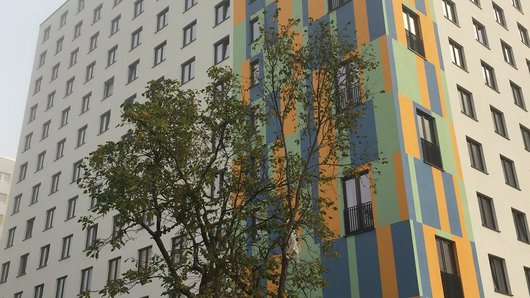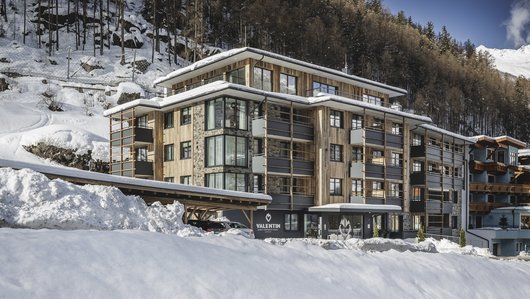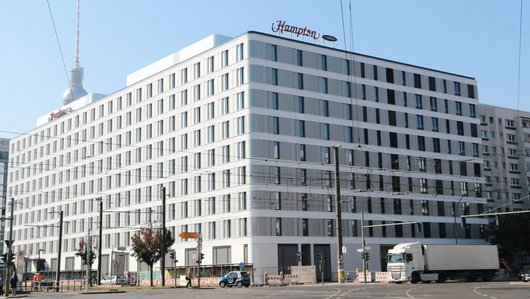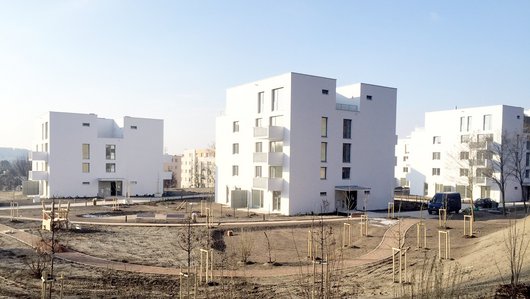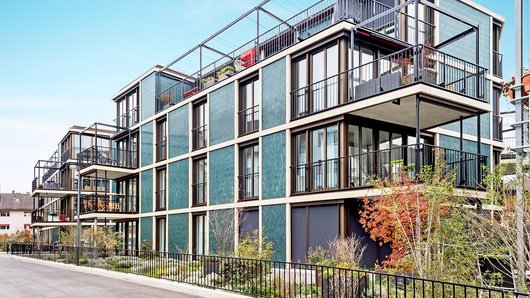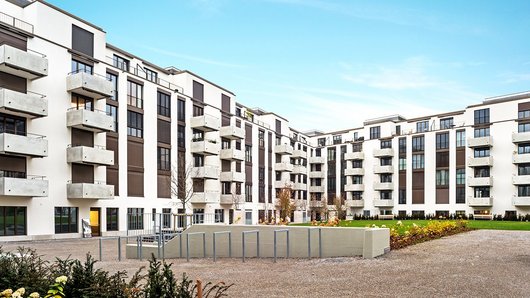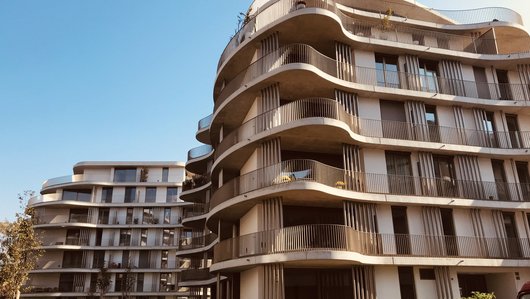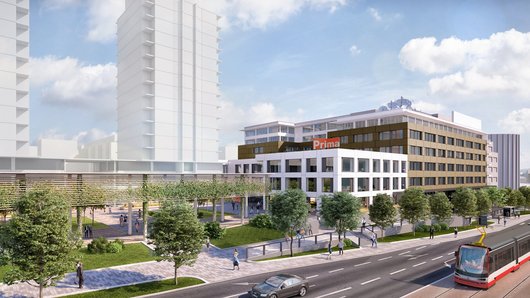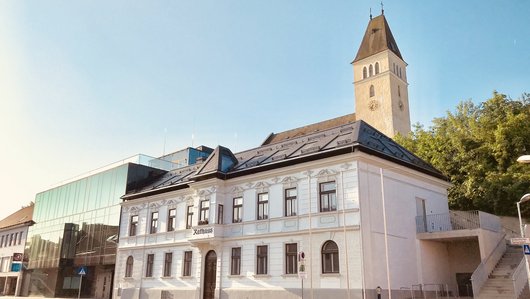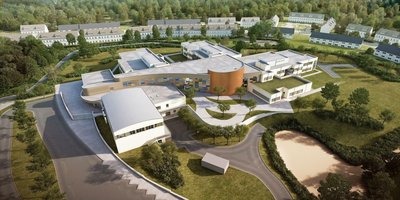
Vogelweh Elementary School Kaiserslautern
The school was built by PORR subsidiary BBGS, at a cost of EUR 28.5 million, as part of a school-building Programme by the American Armed Forces in Europe.
When building the Elementary School, both US and EU standards had to be taken into account. Flexibility and accessibility were also required, along with high security and sustainability requirements.
-
EmployerLandesbetrieb Liegenschafts- und Baubetreuung Rheinland-Pfalz LBB NL Trier
-
ContractorARGE Neubau VOES - BBGS GmbH, Mickan General-Baugesellschaft mbH & Co. KG und Steffensky & Ringle Bau GmbH
-
Order typeGeneralunternehmerin
-
Project typeBuilding construction . Public buildings
-
Project scopeConstruction of a two-storey school complex with additional safety and sustainability requirements
-
Order volume28.5 million euros
-
Construction start09/2016
-
Construction end08/2019
Overview
Vogelweh Elementary School was built by a consortium under the technical lead of PORR subsidiary BBGS. The 52,000m² site is located within the US-owned ‘Vogelweh Housing’ estate in the south-west of Kaiserslautern. The school is accessible throughout and will be attended by 655 students aged 2-12, of whom 25% are special needs students. The flexible building concept allows for different learning styles and varied class sizes.
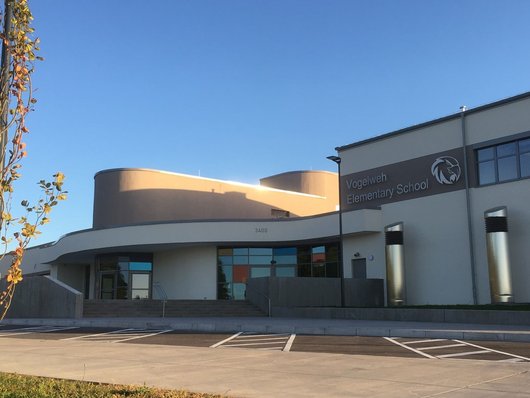

Preparations
BBGS began work in September 2016 with the earthworks. The terrain modelling involved shifting more than 200,000 tonnes of soil. Some 124,000 tonnes of partially contaminated earth were removed and disposed of; the remaining 76,000 tonnes were used for landscaping the new site.
Since the customer places a great deal of value on sustainability, we worked with regionally-sourced building materials with a high proportion of recycled material. The reinforced concrete used contained over 97% waste material.
Safety and sustainability
To keep damage to a minimum in the event of an attack, the US military has high security requirements for its buildings. For this reason, the buildings are mostly monolithic reinforced concrete structures. Glass facades and windows are reinforced with steel structures and have a special triple-layer safety glazing. All ceiling suspensions are double-secured.
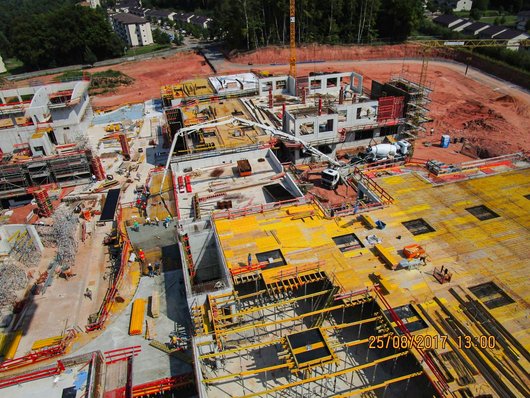

In addition to security, the US military also places considerable emphasis on sustainability – this applies to construction of the building as well as during operation. The school was built from primarily regionally-sourced building materials with a high proportion of recycled material. For example, the reinforced concrete contained over 97% waste material. Light coloured materials were used for the outdoor areas and roof covering, in order to reflect as much sunlight as possible.
Surface water is collected in sunken buffer storage systems, specifically, swales, which slow down rainwater runoff to avoid flooding neighbouring land. Rainwater from the roof is stored in four 5m³ tanks and used to water the gardens. Green roofs also contribute to water management and improve the microclimate. The project aims to achieve a Silver LEED certification.
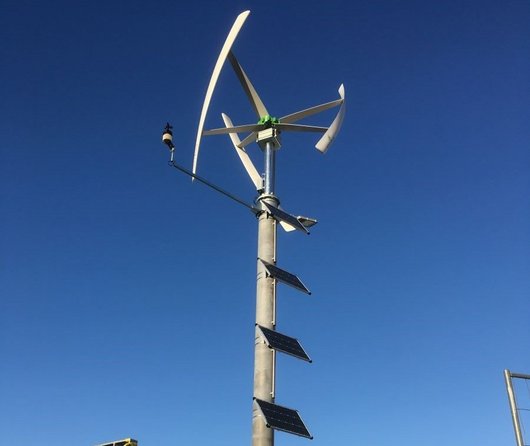

The building concept
The core of the school building is the “Commons”, a large communal area at the centre of the school complex which serves as a kind of hub connected to all the main areas of the building. The main entrance is located on the north-east side of the building and access checks will be carried out here.
It is flanked by the administrative area and information centre. The glass-fronted north-west facade of the commons hall opens into the school’s outdoor courtyard, with access to an outdoor “green classroom” in the style of an amphitheatre.
A vestibule in the façade, located next to the break hall, can be used as a direct entrance to the commons area for external events.
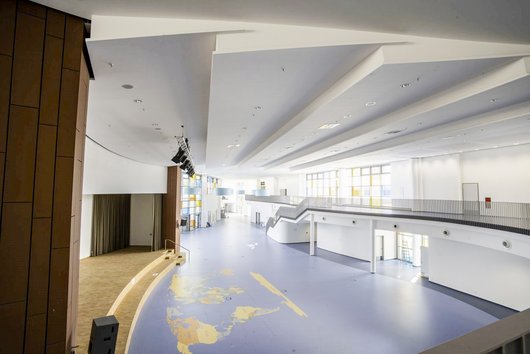

The formwork for the curved stage tower in the communal area required considerable manual skill.
The auxiliary campus buildings, called “Neighborhoods”, follow a similar construction to the main building. Individual study studios are grouped around a communal connecting area that serves as a multifunctional space. An open, flexible construction method with mobile separating walls means that the study studios can be arbitrarily extended into the hub.
There are also group areas and individual rooms. Art and music each have their own blocks linked to the outdoor area. A large gym is available for physical education, with pitch markings for a variety of sports. A large kitchen built to US hygiene standards ensures that students will not go hungry.
Learning tools have been integrated into the furnishings: the flooring in the hub includes maps of the continents, and a world map is integrated into the commons area. Stairs are labelled with numbers and the notes of the US national anthem are recessed into the music room. Another learning tool is a number of ceiling panels made of acrylic glass, through which students can observe the inner life of the ceiling cavity.
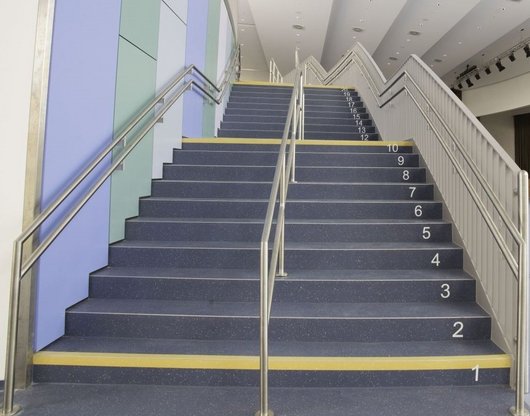

Construction challenge
A highlight from a construction point of view is the stage tower integrated into the communal area. The formwork for the curved tower has an inclined upper edge that required particular manual skill. The interior and external facades were clad with clay tiles. This rounded arrangement is unique in Germany and required a special building permit.
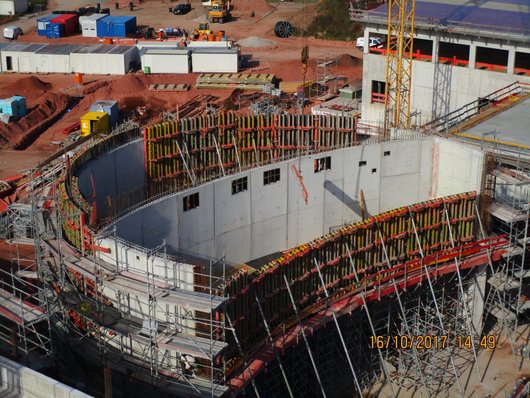

Summary
PORR subsidiary BBGS acted as technical lead for a consortium that has built a school complex with a gross floor area of 15,500m², during a construction period of three years. More than 160 tonnes of steel, almost 10,000m³ of concrete and around 1,300 tonnes of reinforced concrete went into the building.
Technical data
-
Soil moved75,000t
-
Soil removed124,000t
-
Parking spots161
-
Asphalt road2,580m²
-
Concrete road3,200m²
-
Concrete paving4,300m²
-
Playing field540m²
-
School garden150m²
-
Gross floor area15,500m²
-
Steel incorporated in superstructure165.5t
-
Concrete incorporated (building)9,846m³
-
Reinforced concrete incorporated (building)1,285t

